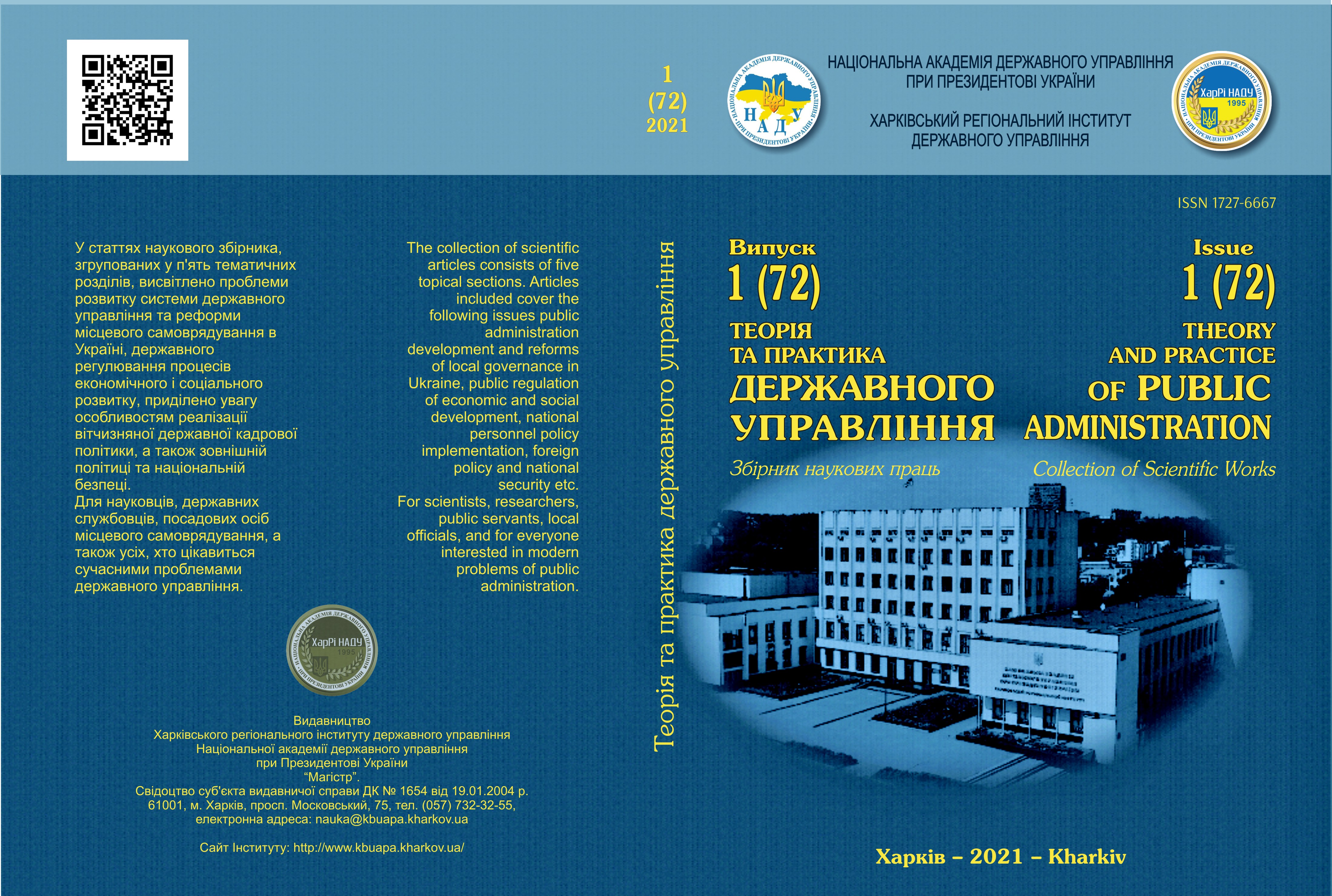ЧИННИКИ ВИКОРИСТАННЯ СОЦІАЛЬНИХ МЕРЕЖ У ПУБЛІЧНОМУ УПРАВЛІННІ
Анотація
Проаналізовано особливості функціонування та основні напрями застосування технологій соціальних мереж у публічному управлінні. Досліджено перелік та внутрішні умови факторів, що стимулюють використання соціальних мереж у публічному управлінні. Особливу увагу приділено більш детальному розгляду поведінкових, технологічних та економічних факторів, що впливають на упровадження соціальних мереж у публічному секторі. Доведено, що вказані стимуляційні фактори створюють передумови для більш якісного розвитку соціальних мереж та розширюють застосовність їх у публічному управління. Також зазначено, що впливу стимуляційних факторів можуть протистояти певні бар’єри на шляху використання соціальних мереж у публічному секторі (системні, організаційні та культурні виклики, пов’язані з бюрократією та стандартними операційними процедурами; інформаційні та правові виклики, пов’язані з використанням інноваційних технологій).
Завантаження
Посилання
Revenko, O.V., Revenko, T.V. (2020). Stratehichnyi analiz sotsialnykh komunikatsii biznesu v protsesi propahuvannia tendentsii evropeiskoi intehratsii v Ukraini. Aktualni problemy derzhavnoho upravlinnia, 2 (58), 198–205. Kharkiv: Vyd-vo KharRI NADU “Mahistr” [in Ukrainian].
Yakymchuk, O. (2011). Onlainovi sotsialni merezhi: perspektyvy rozvytku. Relihiia ta sotsium: Mizhnar. сhasopys, 2 (6), 199–205 [in Ukrainian].
Instagram accounts with the most followers worldwide as of September 2019. URL: https://www.statista.com/ statistics/421169/most-followers-instagram/.
Goldsmith, S., Eggers, W.D. (2004). Governing by Network: The New Shape of the Public Sector. Washington: Brookings Institution Press.
Автори, які публікуються у цьому журналі, погоджуються з наступними умовами:
- Автори залишають за собою право на авторство своєї роботи та передають журналу право першої публікації цієї роботи на умовах ліцензії Creative Commons Attribution License, котра дозволяє іншим особам вільно розповсюджувати опубліковану роботу з обов'язковим посиланням на авторів оригінальної роботи та першу публікацію роботи у цьому журналі.
- Автори мають право укладати самостійні додаткові угоди щодо неексклюзивного розповсюдження роботи у тому вигляді, в якому вона була опублікована цим журналом (наприклад, розміщувати роботу в електронному сховищі установи або публікувати у складі монографії), за умови збереження посилання на першу публікацію роботи у цьому журналі.
- Політика журналу дозволяє і заохочує розміщення авторами в мережі Інтернет (наприклад, у сховищах установ або на особистих веб-сайтах) рукопису роботи, як до подання цього рукопису до редакції, так і під час його редакційного опрацювання, оскільки це сприяє виникненню продуктивної наукової дискусії та позитивно позначається на оперативності та динаміці цитування опублікованої роботи (див. The Effect of Open Access).

